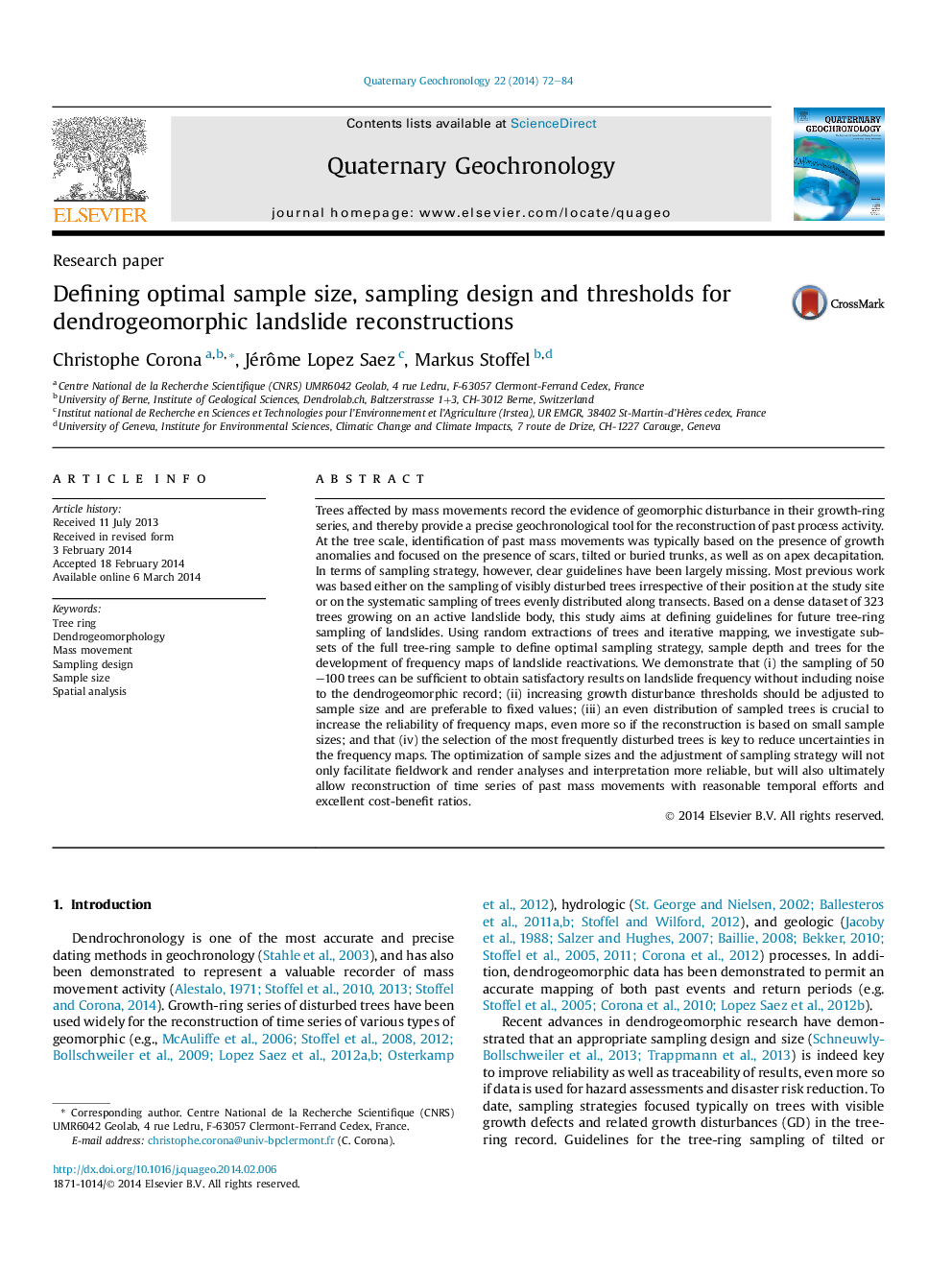| کد مقاله | کد نشریه | سال انتشار | مقاله انگلیسی | نسخه تمام متن |
|---|---|---|---|---|
| 4724962 | 1639854 | 2014 | 13 صفحه PDF | دانلود رایگان |

Trees affected by mass movements record the evidence of geomorphic disturbance in their growth-ring series, and thereby provide a precise geochronological tool for the reconstruction of past process activity. At the tree scale, identification of past mass movements was typically based on the presence of growth anomalies and focused on the presence of scars, tilted or buried trunks, as well as on apex decapitation. In terms of sampling strategy, however, clear guidelines have been largely missing. Most previous work was based either on the sampling of visibly disturbed trees irrespective of their position at the study site or on the systematic sampling of trees evenly distributed along transects. Based on a dense dataset of 323 trees growing on an active landslide body, this study aims at defining guidelines for future tree-ring sampling of landslides. Using random extractions of trees and iterative mapping, we investigate subsets of the full tree-ring sample to define optimal sampling strategy, sample depth and trees for the development of frequency maps of landslide reactivations. We demonstrate that (i) the sampling of 50–100 trees can be sufficient to obtain satisfactory results on landslide frequency without including noise to the dendrogeomorphic record; (ii) increasing growth disturbance thresholds should be adjusted to sample size and are preferable to fixed values; (iii) an even distribution of sampled trees is crucial to increase the reliability of frequency maps, even more so if the reconstruction is based on small sample sizes; and that (iv) the selection of the most frequently disturbed trees is key to reduce uncertainties in the frequency maps. The optimization of sample sizes and the adjustment of sampling strategy will not only facilitate fieldwork and render analyses and interpretation more reliable, but will also ultimately allow reconstruction of time series of past mass movements with reasonable temporal efforts and excellent cost-benefit ratios.
Journal: Quaternary Geochronology - Volume 22, August 2014, Pages 72–84